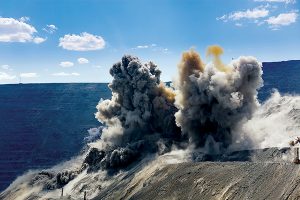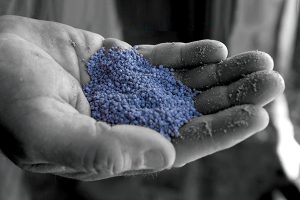Blasting technology goes high tech
Blasting is synonymous with mining like gold is to wealth, and few companies know more about what it takes to safely execute an effective blast than Nordex Explosives Ltd. of Kirkland Lake, Ontario.
Located in the heart of one of Canada’s more prolific gold and silver mining regions, Nordex has earned the reputation by local miners for being ‘reliable’ thanks to its knowledge and understanding of explosives and how to handle them.

Blasting has gone high tech.
In fact, not only does Nordex supply gold and silver mines in Ontario and northern Quebec with explosives, it also now produces Australia’s JOHNEX Explosives and its signature product, Econotrim Buttbuster, an explosive world renowned for perimeter control in mining.
The product is said to reduce overbreak, thereby creating smoother walls and a safer environment for portals, shafts and tunnels.
Traditionally, normal explosives’ blasting is an economical method of breaking rock, but can sometimes result in damage to the perimeter of the opening. The damage, however, can be better controlled by using a more precisely measured explosive like the Econotrim Buttbuster explosives.

A handful of specially formulated Buttbuster
explosive goes through flexible screw conveyors then up to a carousel that fills the Buttbuster tubes.
This is accomplish with a one-piece, custom-length, semi-rigid, coiled yellow tube that is 25.4 mm in diameter and contains a precisely measured quantity of specially formulated explosive.
JOHNEX manufactures the explosive using a custom-designed 10-m high carousel in which 12 tubes are filled with one of two grades of explosive. Delivering each grade of powder from a ribbon blender to two dosing bowls at the top of the carousel are two Flexicon flexible screw conveyors, each 36 ft (11 m) long.
The Nordex plant produces the same two grades of explosive powder with the same carousel system as the plant in Australia. Both grades are proprietary formulations, and the raw materials for the Nordex plant are sourced through the parent company in Australia.
Jim Taylor, Nordex President and CEO, explains: In an enclosed room, the raw materials are precisely weighed, poured into the ribbon blender, and mixed to a homogeneous blend that has a bulk density of approximately 59 lb/ft3 (950 kg/m3), and a particle size distribution of 1/25-1/4 in. (1-6 mm) in diameter. The blender discharges the material into one of two 3.85 ft3 (110 liter) capacity floor hoppers, each connected to a flexible screw conveyor that transfers one of the explosive powder grades without separating the blended materials.
The outlet of each hopper is connected through a charging adapter to the inlet of the flexible screw conveyor. The conveyors pass through openings in the wall to the adjacent area where they rise to the top of the carousel.
Conveyors move material to dosing bowls
Each conveyor consists of a heavy-duty spiral rotating inside a 114mm diameter polymer tube. As the screw propels the material through the tube, it self-centres, providing sufficient clearance between the screw and tube wall to assure gentle, safe handling of particles. The spiral, which is the single moving component of the conveyor, is connected to an explosion proof electric motor located above the conveyor’s discharge. This design eliminates contact of the sensitive powder being conveyed with any bearings or seals.
The material exits each conveyor through a 0.9-m long downspout into one of the dosing bowls. Each bowl, under PLC control, releases a predetermined amount of powder into the Buttbuster tubes rotating and indexing under it. At the bottom of the carousel, the tubes oscillate up and down to properly fill and compact the powder.
The filled tubes are then hand removed from the carousel, capped, coiled and placed into boxes for shipping.
From the time ingredients are added into the blender until the filled tubes are removed from the carousel and capped (both done manually), the entire process is automated by a PLC. The flexible screw conveyors start and stop on reaching a pre-set bowl volume detected by a level sensor and transmitted to the PLC.
“The carousel can produce a 16.4 ft (5m) length of explosive in 7 seconds,” says Taylor.
Nordex system modified to Canadian standards
Although the Nordex production line meets the same safety standards as the JOHNEX system in Australia, it needed to be engineered to Canadian Standards.
“Walkways and access platforms, for example, needed to be reconfigured,” says Taylor. “Also, while Australian electrical systems are designed for 50Hz, 415V operations, Canadian systems operate at 60Hz, 600V.”
Application engineers from Flexicon Australia assisted with the layout of the hoppers on JOHNEX drawings and supplied an explosion proof 60Hz, 600V motor from North America to be brought into Australia for testing before being shipped to Canada.
For both Australia and Canada, the Buttbuster production system has been designed to meet the strict specifications required to operate in an environment that contains potentially explosive materials.
Comments